“Het Schip”, Michel de Klerk’s “working class palace”, is an Amsterdamse School star
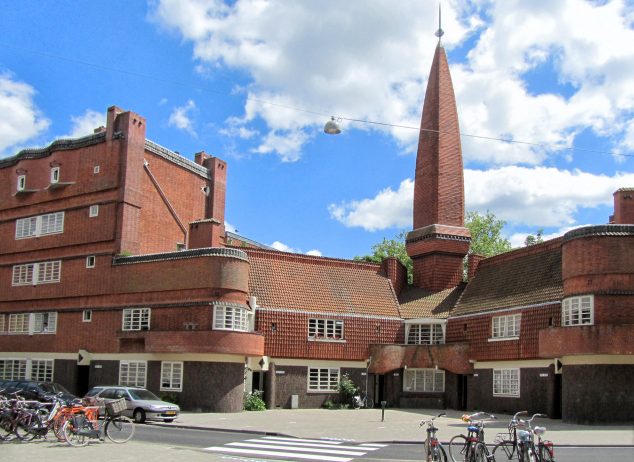
Het Schip apartment building in Amsterdam, northern facade with tower and entrance to the museum’s model apartment
I first noticed them while walking around Amsterdam: odd buildings with wavy facades, ladder windows, and decorative wrought iron that looked nothing like the traditional architecture usually associated with the city. So I asked some local design buffs about the buildings and found out they were created by members of a movement known as the Amsterdam School (1910-1930), which sought to modernize architecture and interior design in the Netherlands. I was delighted to learn that there’s an entire museum dedicated to the movement in West Amsterdam, and decided to give it a visit – and I was glad I did!
To get to the museum I took Bus 22 from Centraal Station to the Spaarndammerstraat stop. From there it was only a short walk through a residential neighborhood (Spaarndammerbuurt) full of great Amsterdam School buildings.
Working Class Apartments
Politically, the Amsterdam School was socialist, and some of its finest projects were designed to house workers. Living conditions for Amsterdam’s poor were dismal at the turn of the twentieth century. Families occupied single rooms in tenements with no plumbing or electricity. The Amsterdam School improved their circumstances by providing multi-room apartments with modern conveniences in housing developments that included schools, meeting halls and post offices.
The buildings weren’t just functional – they were works of art. The Amsterdam School believed that society’s rich and poor should have equal access to beautiful architecture. Think flowing and undulating lines, multi-colour bricks laid in patterns resembling wood and straw, original details on the façade and interior (like the anchors, mythical figures, and even sea creatures on the exterior of the ornate Scheepvaarthuis (Shipping House), now the luxurious Grand Hotel Amrath).
Museum Het Schip
The Amsterdam School’s most famous building, Het Schip (The Ship) was built for Spaarndammerbuurt laborers in 1921. While it’s still a functioning apartment block, its former post office and adjacent primary school have been repurposed into Museum Het Schip.
Het Schip was created by the movement’s leading architect, Michel de Klerk, and is considered his masterpiece. The building is strikingly imaginative, with brick storks bulging from the masonry and odd cigar-shaped protrusions. In places, the brickwork seems to furl like a paper scroll. It’s no wonder his contemporaries found de Klerk a bit strange. His own son referred to his work as “sheer lunacy.” However, while professionals and craftsmen of the time were critical of the style, the general public welcomed it.
Inside the museum, I saw a wonderful array of lamps, sculptures, paintings and furniture, all designed for Amsterdam School interiors. There was even an entire living room created by Michel de Klerk.
A photo exhibition featured pictures of Amsterdam School buildings shot by World Press Photo Award winner Floris Leeuwenberg. There’s also an absorbing interactive exhibit with films and music.
In the courtyard, I found a fascinating collection of “street furniture” designed by the Amsterdam School. Objects included trash cans, mailboxes and streetlights. Especially interesting was the vintage public lavatory, examples of which can still be found around Amsterdam. The tops are latticed and the bottoms are raised above ankle-level so cops can watch out for any naughty doings. Presumably these were for men only…
The gift shop was chock full of unique items relating to the Amsterdam School, with books produced by the museum’s own publishing department. I picked up a copy of a colourful Amsterdam School guide that maps architectural cycling routes all over the city.
Guided Tours
Admission to the museum includes a 45 minute guided tour, which visits a typical 1920s working-class apartment as well as a replica of the dire slum dwellings that housing projects like Het Schip replaced. It was amazing to see the vast lifestyle changes these improvements enabled. The new apartments added years to the lives of the tenants. The old Het Schip post office, with its modernist phone booth and glossy lavender tiles, was a tour highlight.

Door to employee-only area in the former post office in apartment building and museum Het Schip in Amsterdam
Groups of ten or more can take an extended theme tour, which I highly recommend. You’re sure to meet some interesting people. My group included an engineer and an opera singer. Before the tour we had coffee and cake in the museum’s very hip lunchroom. Afterwards, our expert guide escorted us around the neighbourhood to two more incredible Amsterdam School apartment blocks.
The museum also arranges guided tours to Amsterdam School buildings in other parts of the city. Don’t miss the ornate Scheepvaarthuis (Shipping House), recently converted to the luxurious Grand Hotel Amrath.
The Plan South neighborhood, home to Piet Kramer and Michel de Klerk’s De Dageraad apartments, is also well worth a visit.
All photos with no copyright credit are © Jvhertum/WikiCommons
IF YOU GO
Where it is:
Museum Het Schip: Oostzaanstraat 45, 1013 WG Amsterdam
Contact:
info@hetschip.nl
+31 20 686 685 95
Website: www.hetschip.nl
Facebook: http://www.facebook.com/MuseumHetSchip
Twitter: https://twitter.com/Museumhetschip
How to get there:
Take bus 48 or 22 to the Spaarndammerstraat stop.
Hours:
Tuesday through Sunday, 11:00 to 17:00. Guided tours depart on the hour. English tour guaranteed at 15:00.
Entrance fees, including 45 minute guided tour:
Regular: 12,50 euro
Student: 7,50 euro
Under 12: Free
Extended Theme Tour: Additional 5 euros (groups of ten or more)
Places to Stay:
The WestCord Art Hotel Amsterdam is within walking distance of the Museum Het Schip. The Yays Zoutkeetsgracht Concierged Boutique Apartments are another nearby option.
And , of course, there’s always the luxurious Grand Hotel Amrath…
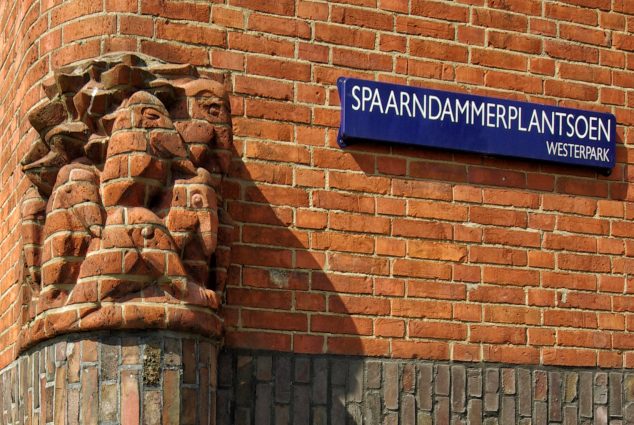
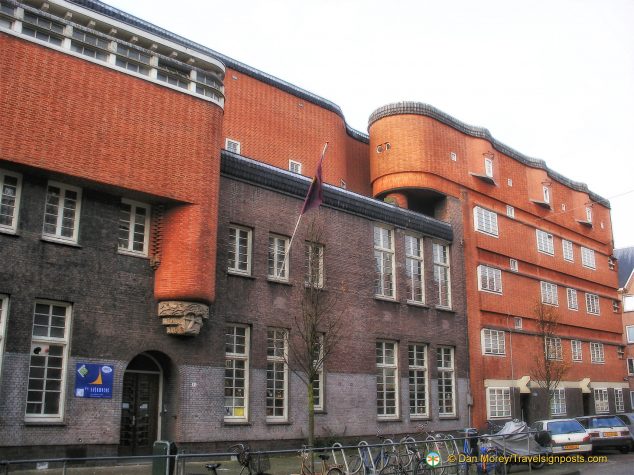
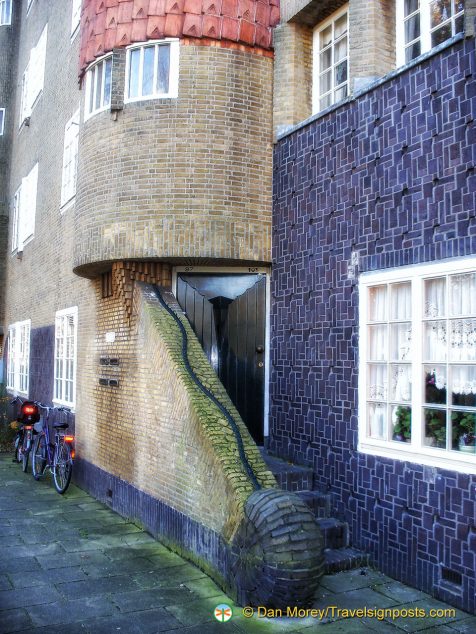
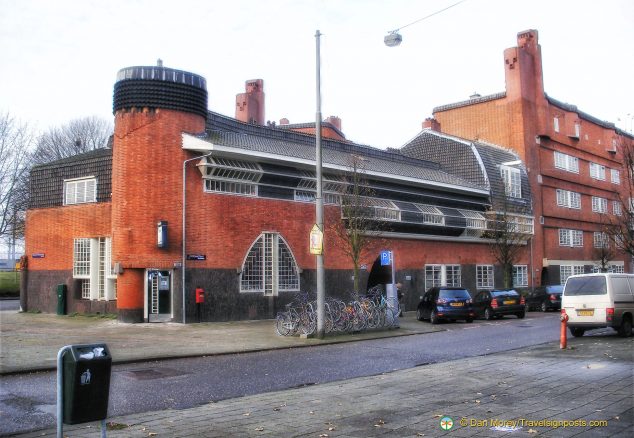

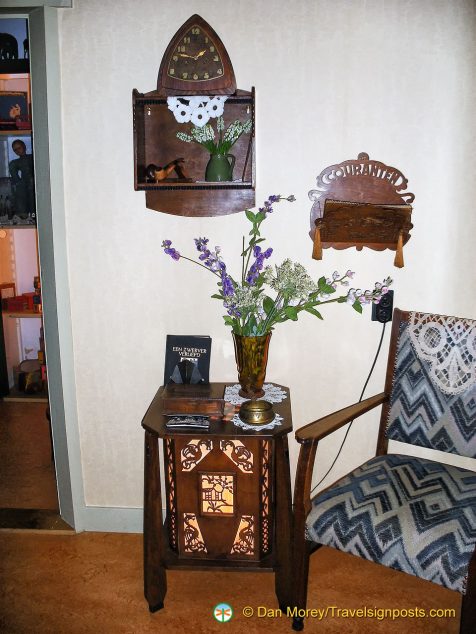




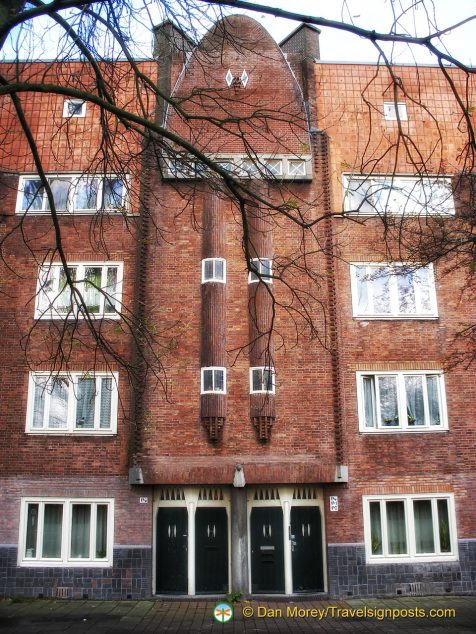
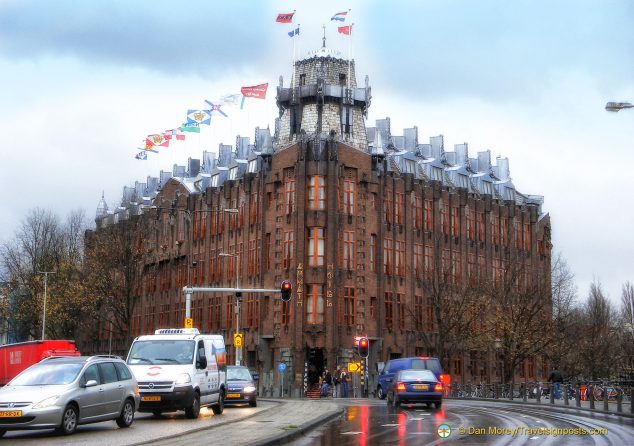
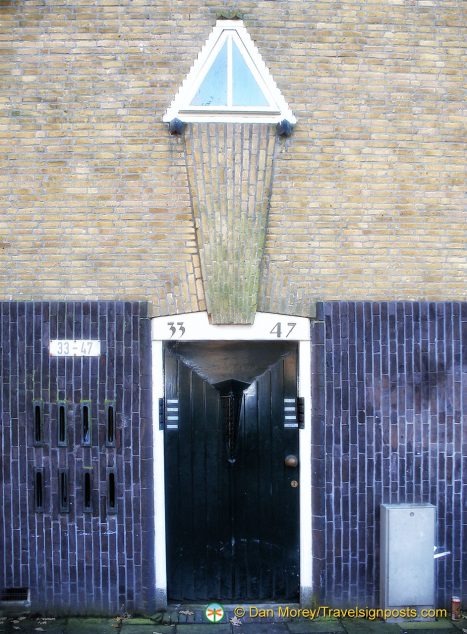
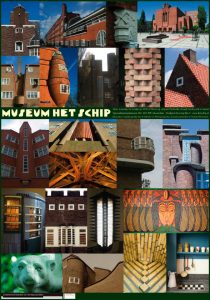

 Take Better Digital Photos eBook
Take Better Digital Photos eBook Guerrilla Travel Photography eBook
Guerrilla Travel Photography eBook
I’ve been visiting and photographing Amsterdam School architecture for the past 5 years living here, I have hundreds of pictures to edit. 🙂 I think you took the book “on the waves of the city”, that’s the book I used as well to find this architecture around town. Gr8 to see that other people are also seduced by this style!
Yes, Adam! “On the Waves of the City” has led me to many of my favorite places in Amsterdam: the Piet Kramer bridges, Municipal Archives, Tuschinski Theatre, and of course, Café Batavia 1920 (check out the side entrance). If I were lucky enough to live there I’m sure I’d have as many photos as you do. If you ever put them online, let me know. Would love to see them! -Dan